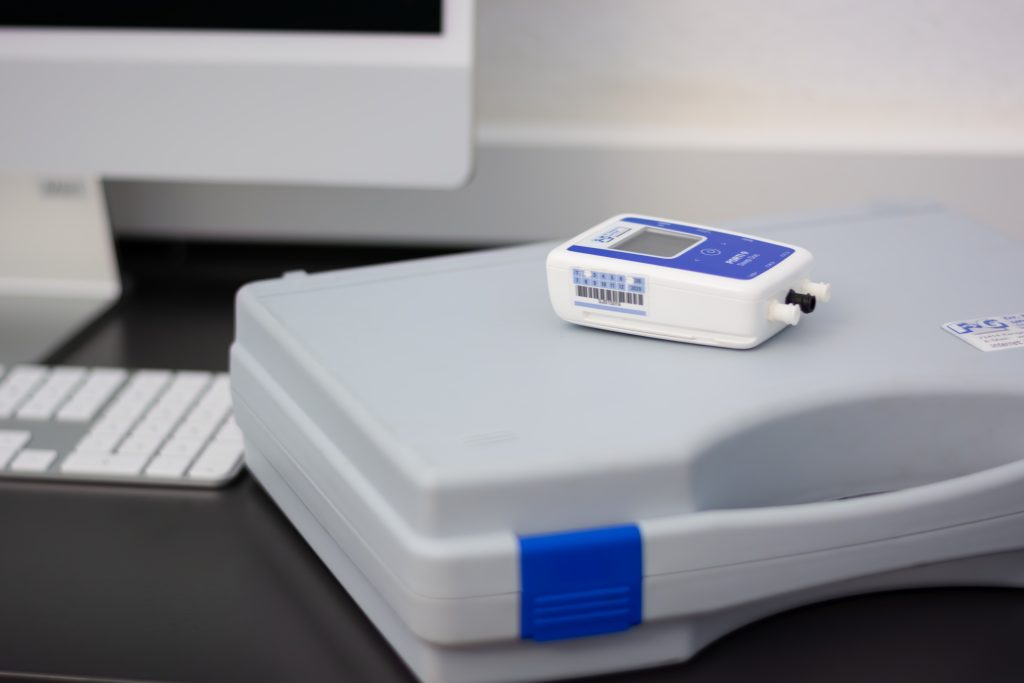Sleep apnoea diagnostics
If you can’t breathe properly during sleep, you feel tired during the day. In addition, breathing disorders damage the cardiovascular system – and thus increase the risk of heart attack and stroke. We diagnose sleep apnoea using polysomnography.

Who sleep apnea affects
Sleep apnea is often accompanied by snoring. Not all snoring is a cause for concern. However, caution is advised if you often stop breathing in your sleep, only to suddenly and all the more violently “saw logs”. These dangerous breathing interruptions often affect people who are very overweight. The reason: increased fat tissue presses on the part of the upper airways that is not supported by cartilage or bone.
Monitoring device
We will check you for breathing stops by giving you a small device to take home with you. You wear this monitoring device for polygraphy overnight. . It monitors your breathing and provides us with valuable data. If we suspect sleep apnea, we will refer you to a sleep laboratory. There, your breathing will be examined more closely under controlled conditions during the different phases of sleep.
Finding a remedy
If you have sleep apnea, you will be given a device in the sleep laboratory that keeps the upper airways open. This so-called positive airway pressure therapy prevents the typical pauses in breathing. You will have to get used to the device, but it’s worth it. Your quality of life will improve – as will that of all the people who listen to you snore. You will come to us regularly for monitoring.
Weight reduction can significantly improve sleep apnea. This is often easier said than done for people with obesity, partly because genetic predisposition or hormones play a role. In some cases, we therefore recommend and administer additional drug therapy.